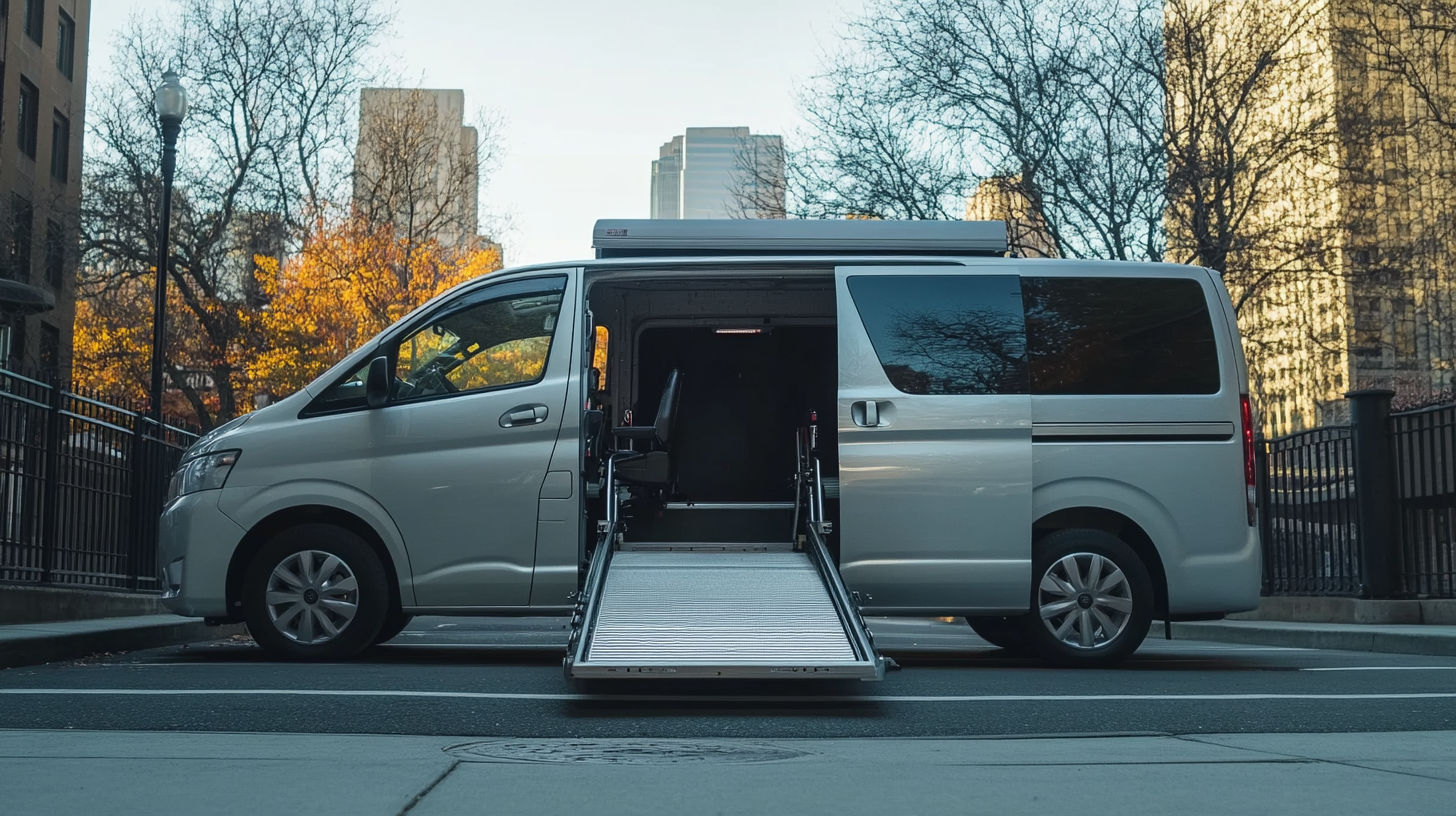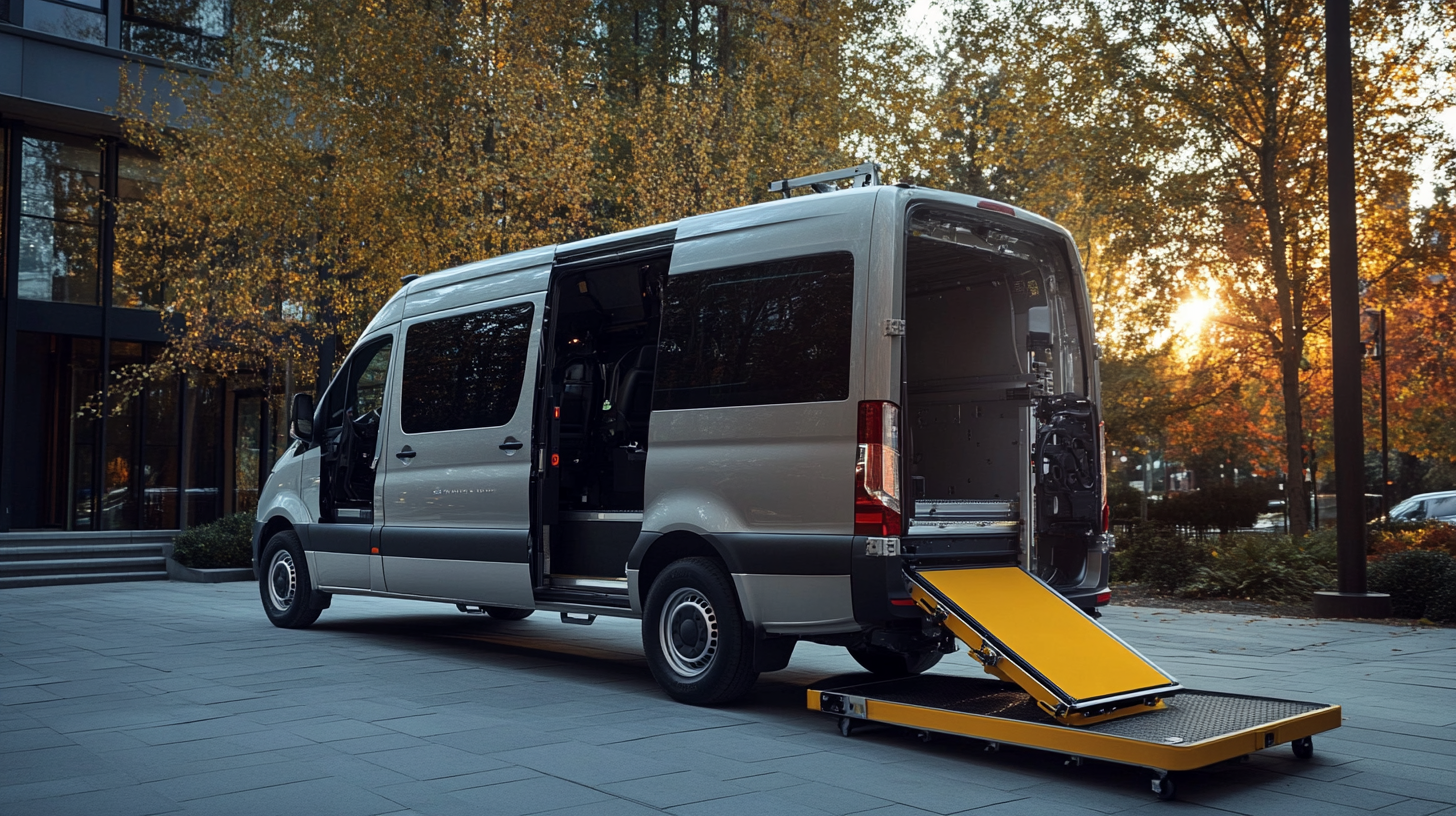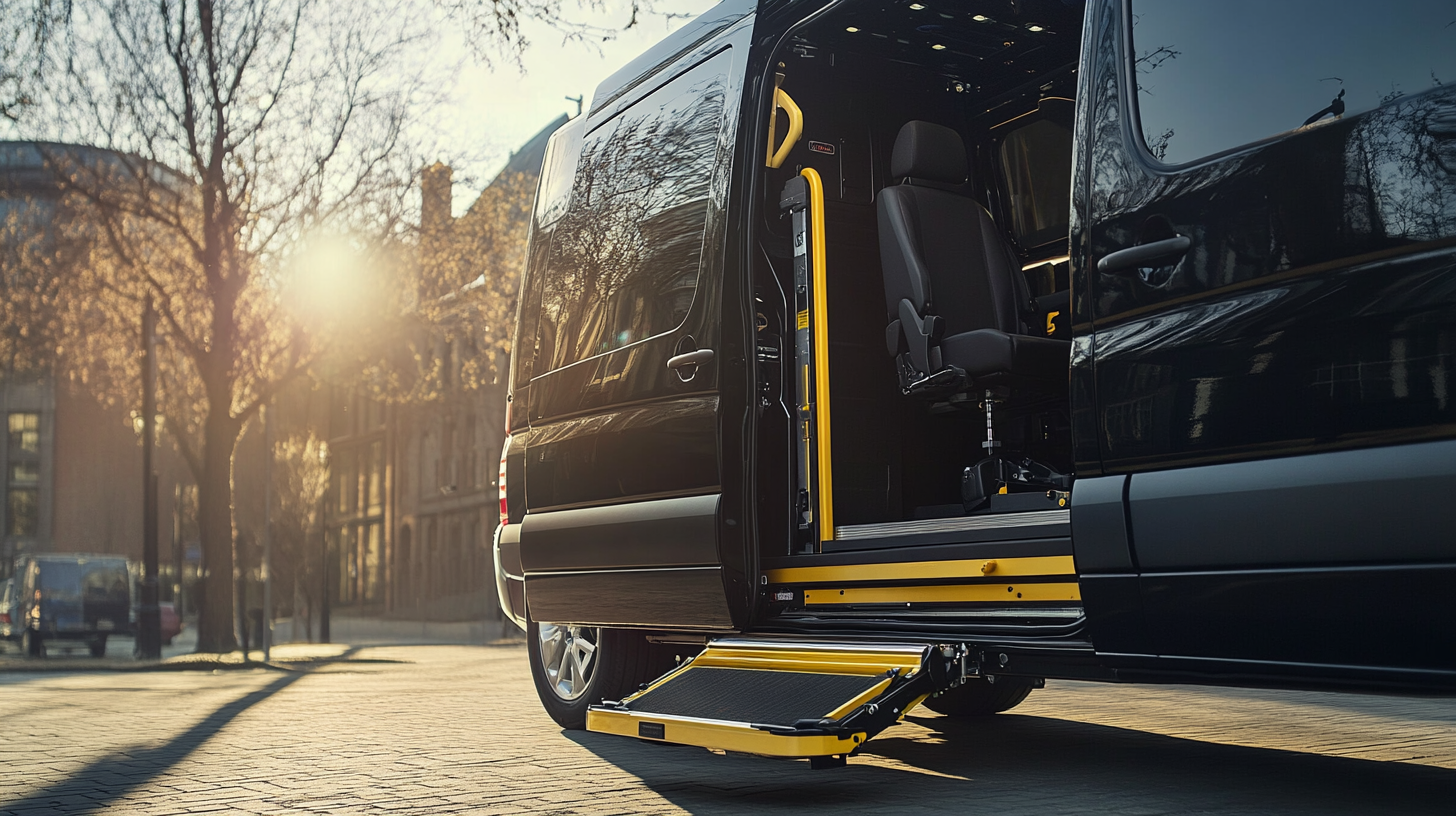Innovative Accessible Transportation Solutions Featuring Vans with Wheelchair Lift Systems
Indeed, the issue of accessible transport has really taken and is gaining speed in recent times with what seems to be an urgent call for solutions to serve the mobility impaired. According to the National Aging and Disability Transportation Center, for example, around 19 percent of older Americans aged 65 and over suffer from mobility limitations. This trend is however anticipated to worsen because of the increasing population leaving in years to come. With such a great percentage of a population cut off from overcoming transport barriers, innovations like the 'van with wheelchair lift' have become increasingly essential in ensuring independence and access to those who use wheelchairs.
Wheelchair lift systems in vans not only free up the users, but they make their overall life better. Accessible transportation means many are freer going and, in turn, creates greater opportunity for jobs and social participation according to the report provided by the U.S. Department of Transportation. The more cities and communities make efforts to be inclusive, the more demand will grow for vans with wheelchair lifts. In subsequent blogs, innovative methods of transporting people with a focus more on accessibility shall be studied through how the van with wheelchair lift systems transforms both individuals and societies.

Understanding the Necessity of Accessible Transportation for Individuals with Disabilities
The importance of accessible transportation is paramount in facilitating mobility among disabled individuals for their independence and quality of life. The U.S. Department of Transportation reports that nearly 25% of adults in the U.S. live with a disability and that many of these individuals rely on some form of accessible transportation. Traditional transport systems will not serve their purposes, and innovative solutions like vans with wheelchair lift systems become critical at this juncture.
Research has found that over 70% of wheelchair users never take public transportation because it lacks accessible options. This sheds light on the need for tailored vehicles that provide safe and reliable access to destinations. The National Council on Disabilities states that accessible transportation enhances mobility for individuals and provides a means toward employment, education, and social inclusion. By providing accessible vehicles, communities can promote greater involvement and integration of people with disabilities, towards the larger vision of an inclusive society.
Investment in accessible transportation is economically viable too. According to the Transportation Research Board, a dollar investedin improving transportation accessibility translates into benefits to individuals and the community of as much as $4. This data puts in perspective the need for advocacy and support of creative transportation solutions that put the needs of people with disabilities first, thus ensuring that mobility is a right for all beings.

Key Features of Vans with Wheelchair Lift Systems for Enhanced Mobility
Gone are the days of all those traditional wheelchair accessible vans; today, they are a necessity for movement and independence for persons living with disabilities. Equipped with superior wheelchair lift systems, these vehicles have revolutionized people's lives by making movement in and out of them very easy; one's daily movement has been transformed. Notably, this advanced feature is characterized by improved safety, comfort, and ease of use, which is therefore most preferred by either family or mobility service providers.
Among the noteworthy features of such vans is the reliability of lift systems. These lifts are built to resist wear and tear and maintain a smooth operation but allow the user to enter or exit the van easily. Besides, the spacious interiors provide enough space for the passenger and his or her mobility device to give comfort while traveling. Most modern vans come with advanced technologies such as safety sensors and hassle-free controls that facilitate ease of access.
Still, as the market for accessible transport changes, plenty of developments are on the way. Current industry trends suggest tremendous growth, with further investments in research and development by various manufacturers aimed at countering these challenges through the introduction of innovative products in mobility. Advancements in electric scooter lifts and the development of wheelchair-accessible vehicles are further steps towards the inclusion and accessibility for improved mobility options for riders with disabilities, irrespective of where they live.

Innovative Technologies Revolutionizing Wheelchair Lift Systems in Vans
There lies a new wave of transformation among the emerging technologies while the wheelchair lift systems in vans are revolutionizing processes. As per recent reports, the worldwide market for wheelchair-accessible vehicle growth is poised to expand further with a CAG around 6.8% from years 2021 to 2028. Factors such as increasing demand in transport services catering to disabled populations and inclusive growth of adaptive technologies are anticipated to contribute to this growth.
The most exciting development is in the democratisation of artificial intelligence (AI) around wheelchair lift systems. Apart from enhancing the functions of these systems, AI brings incredible reliability and personalized support for users as they utilize wheelchair lifts. Enabling access to data analytics helps manufacturers develop smarter lift systems that react in real-time to users' needs, and thus improving the overall accessibility and user experience. Innovations not only mitigate smoother and safer operations but create an attitude of care in mobile users with high emotional and practical needs.
Also, collaboration between academic institutions and research centers speeds up innovation. New initiatives like the link between technical universities and rehabilitation research centers have highlighted the means of developing the holistic requirements of accessible transport الفيل, من which any developer would attribute much need to create the engineering-inclusiveness culture that could ignite creative and practical ideals beneficial for the development of the wheelchair lift in meeting the demand of the diverse users' environments.

Real-Life Applications: Success Stories of Accessible Transportation Solutions
Accessible transport is paramount for mobility-challenged persons to access their communities and improve their lives. According to new research, approximately 6.8 million Americans use wheelchairs, demonstrating the urgency for workable solutions to address the challenge of accessible transport. One success story involves a city that invested in a fleet of vans with state-of-the-art wheelchair lift systems. Following the integration of these vehicles into their public transportation system, ridership of people with disabilities increased by 40% within the first year.
An inspiring story comes from a nonprofit organization that transformed its transportation service with vans equipped with custom lifts. These were primarily aimed at providing timely and safe transit for seniors and individuals with disabilities. After implementation, surveys indicated that almost 75% of users with disabilities felt more independent and connected to essential services, showcasing the tremendous impact accessible transportation has on community inclusion.
According to the National Council on Disability, accessible transportation enhances employment opportunities for persons with disabilities. Organizations that have supported accessible transport solutions have noted increased workforce participation by these individuals. The transportation sector is steadily beginning to realize that wheelchair lift systems are a meaningful opportunity for enacting transformative success stories that empower those in need through technological advancement and some measure of commitment to inclusivity.
Future Trends in Accessible Transportation and Wheelchair Lift System Development
There have been technological advancements that favor loads of improvements with respect to accessible transportation, particularly with respect to wheelchair lift systems in vans. As society increasingly becomes aware of inclusiveness, a demand for vehicles for the transport of mobility-challenged people is gathering momentum. Future trends show that an emphasis will be placed on integrating smart technology into wheelchair lift systems for better functionality and experience.
Chair lift automation is one area with great promise; it allows users to operate these systems with minimal physical exertion. This type of advancement makes getting in and out of vehicles much easier, but there is more significance-it promotes the independence of people with disabilities. Safety measures and sensors are also being put in place to make sure that users as well as caregivers feel safe during loading. With these improvements, all dangers are taken away, which makes transport safer for all concerned.
The other key trend is the increasing orientation towards sustainability in accessible transport solutions. While these vehicles manufacture is currently engaged in exploring eco-friendly materials and energy-efficient systems to combat their environmental rottenness, there is a likelihood that upon this green tech pathway, the lift systems will advance towards being solar-powered and utilizing renewable energy in the near future.
Another important collaboration to help determine the future of accessible transportation is between manufacturers and advocacy organizations, as well as technology developers. The thrust here is to use innovations in design and engineering so that we can create a more inclusive world where everyone, regardless of mobility challenges, has the right to travel in a safe and independent manner.